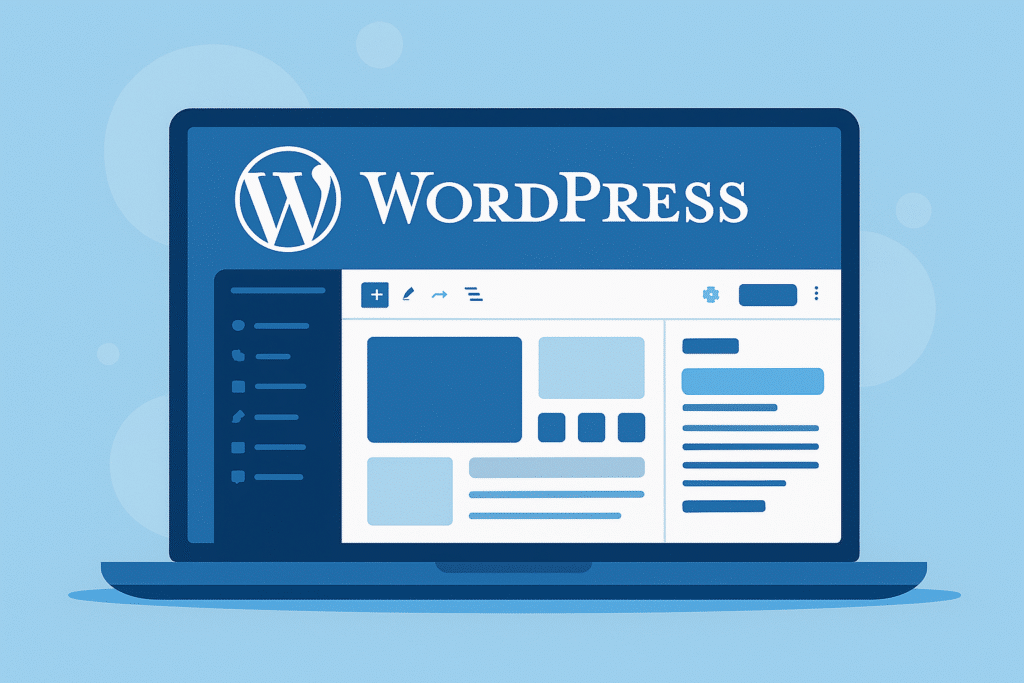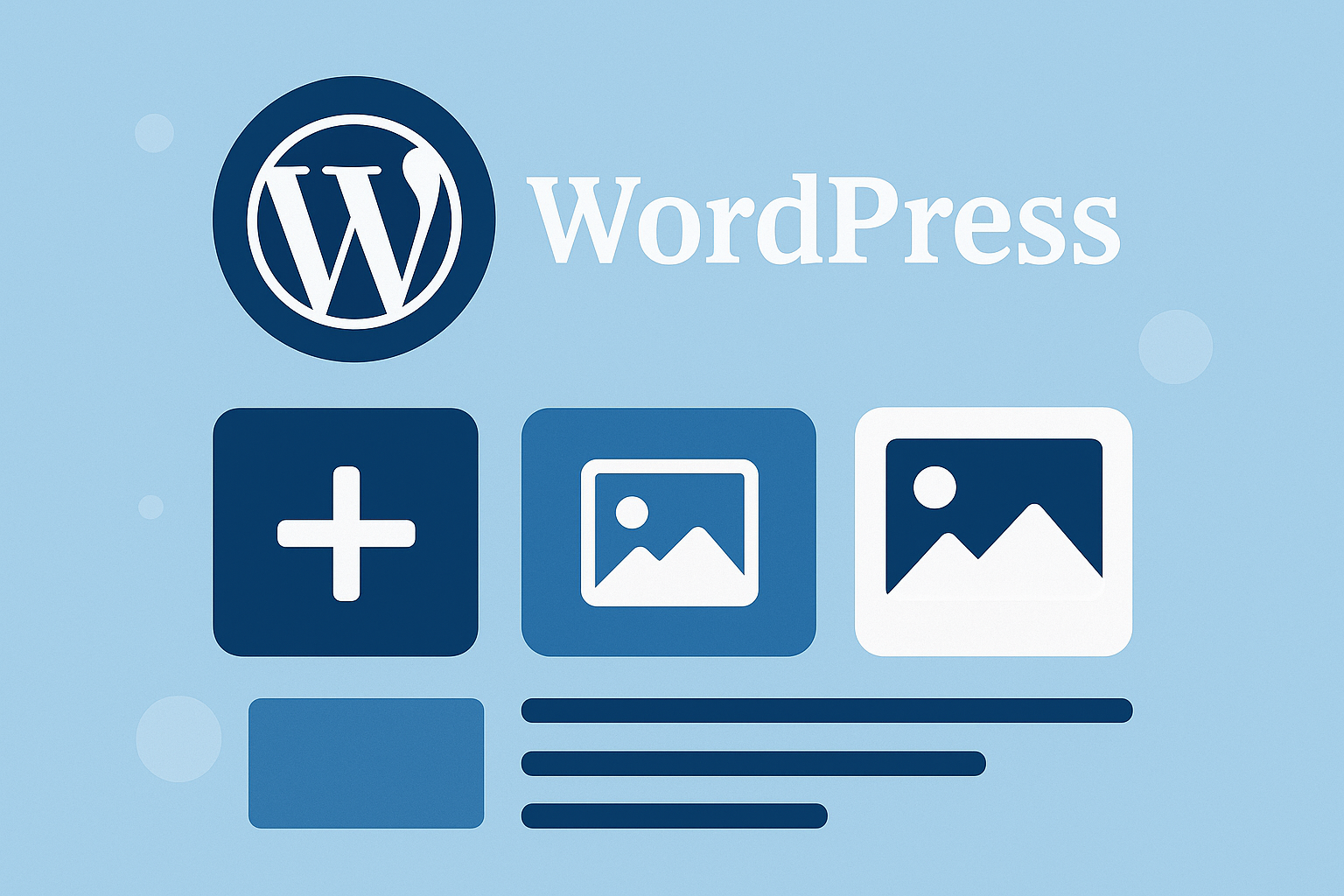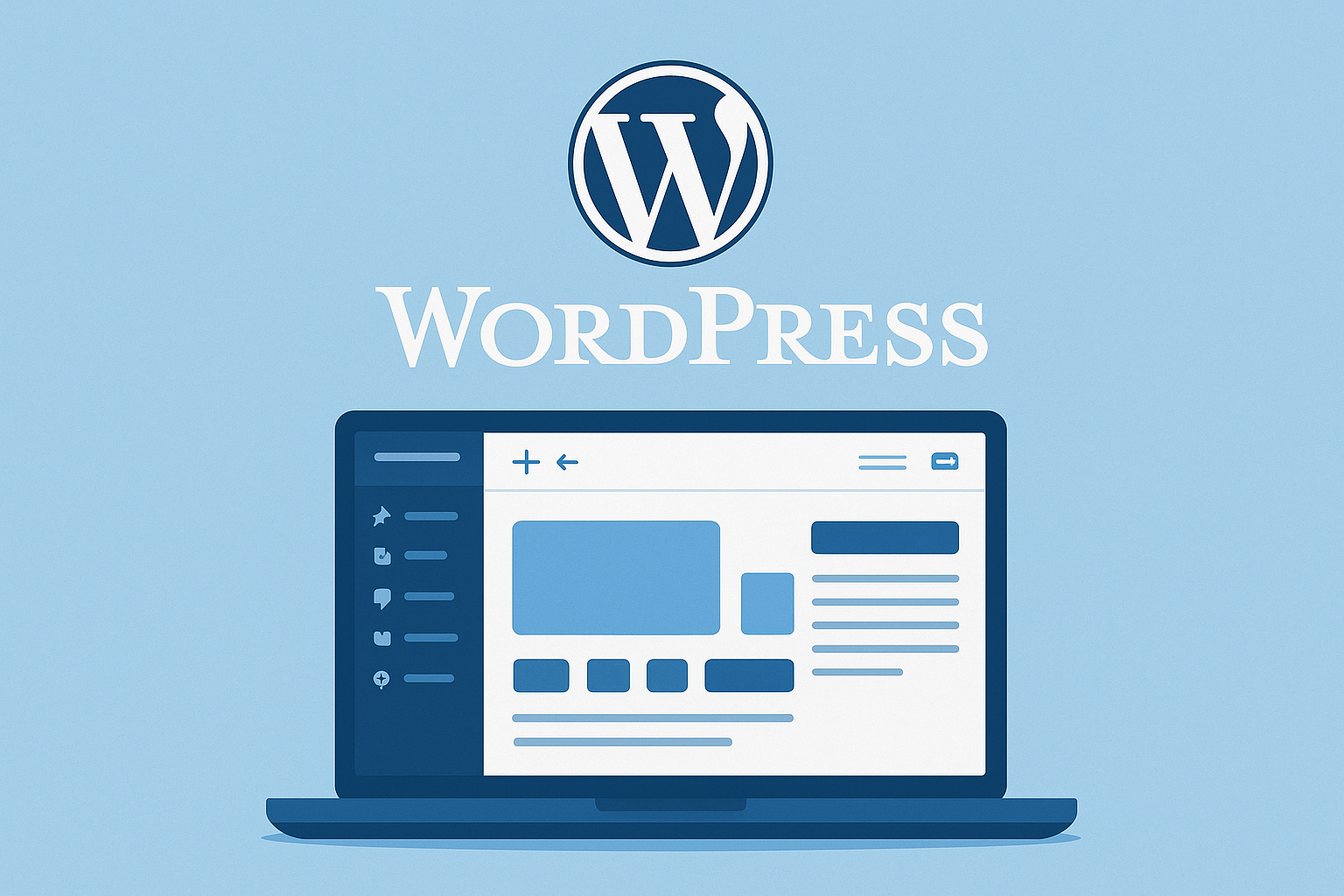Qué es WordPress y cómo funciona

- ¿Qué es WordPress?
- ¿Para qué sirve WordPress y a quién le conviene?
- Cómo funciona WordPress (de cero a publicado)
- Ejemplos de sitios creados con WordPress
- Plugins de WordPress: añade funciones sin programar
- Temas o plantillas: cambia el diseño sin tocar el contenido
- Pasos concretos para lanzar tu web con WordPress
- Errores comunes (y cómo evitarlos)
- En pocas palabras
- Conclusion
Quieres entender qué es WordPress y cómo ponerlo a trabajar para tu proyecto —sin tecnicismos innecesarios—. En esta guía encontrarás una definición directa, las diferencias clave entre WordPress.com y WordPress.org, usos habituales, y los pasos para empezar con buenas prácticas. Lee también: cómo subir una web a 000webhost para hacer tus primeras pruebas sin costo.
¿Qué es WordPress?
WordPress es un CMS (Content Management System) que te permite crear y administrar sitios web sin programar: escribes contenido en un editor visual, subes imágenes y publicas con un clic. Es software libre y de código abierto, mantenido por una gran comunidad y disponible de forma gratuita en WordPress.org.
WordPress.com vs. WordPress.org (la diferencia que evita confusiones)
- WordPress.org (autogestionado): descargas el software y lo instalas en un hosting propio. Te da control total, puedes instalar cualquier subject o plugin y escalar el proyecto a tu medida.
- WordPress.com (plataforma alojada): creas tu sitio en la nube de WordPress.com. Es más simple para empezar; el grado de personalización depende del plan de pago.
Si buscas libertad para crecer (tienda, membresías, SEO avanzado), lo habitual es elegir WordPress.org. Si quieres algo rápido para escribir y no complicarte con servidores, WordPress.com funciona bien.
¿Para qué sirve WordPress y a quién le conviene?

WordPress es versátil: puedes montar desde un blog personal o un portafolio, hasta una web corporativa, una revista digital, una tienda en línea with WooCommerce, cursos (LMS), áreas privadas de clientes o membresías. Su gran ecosistema de topics y plugins resuelve la mayoría de necesidades sin programar.
Cómo funciona WordPress (de cero a publicado)
La lógica es sencilla: tú gestionas contenidos (páginas, entradas, medios, menús y usuarios) desde un panel; WordPress genera el HTML y lo entrega al visitante con el diseño del subject activo. Su editor por bloques (Gutenberg) te deja crear secciones, columnas, galerías o botones arrastrando bloques.
- Requisitos básicos: dominio + hosting compatible con PHP y MySQL. Muchos proveedores ofrecen instalación en un clic.
- Estructura del sitio: define páginas base (Inicio, Servicios, Contacto) y categorías para el blog.
- Diseño: instala un subject from el repositorio oficial de temas o uno premium si necesitas funciones extra.
- Funciones: añade plugins from el directorio de plugins (SEO, seguridad, formularios, copias de seguridad).
- Publicación: redacta, revisa enlaces internos, añade imágenes optimizadas y publica.
Ejemplos de sitios creados con WordPress
The Showcase oficial reúne sitios de referencia (medios, marcas, educación, gobierno). Explóralo para tomar ideas de diseño, navegación y rendimiento.
Plugins de WordPress: añade funciones sin programar
A plugin es un componente que agrega una función a tu web: SEO, analítica, formularios, reservas, traducciones, membresías, etc. Hay miles de opciones gratuitas y de pago. Recomendación general: instala los necesarios, mantenlos actualizados y evita duplicar funciones.
- Imprescindibles por categoría: SEO (p. ej., Yoast/Rank Math), caché (p. ej., LiteSpeed Cache), seguridad (p. ej., Wordfence), formularios (p. ej., Contact Form 7), copias de seguridad (p. ej., UpdraftPlus), comercio (WooCommerce).
- Buenas prácticas: verifica compatibilidad y reputación, haz backup antes de actualizar, borra lo que no uses.
Si quieres ideas para tu stack, revisa esta guía de la casa: plugins útiles para SEO en WordPress.
Temas o plantillas: cambia el diseño sin tocar el contenido

A subject define la apariencia (tipografías, colores, maquetación). Puedes activarlo o cambiarlo sin perder contenido. A la hora de elegir:
- Rendimiento: busca temas ligeros y compatibles con el editor de bloques.
- Soporte y actualizaciones: revisa la frecuencia de lanzamientos y la documentación.
- Personalización: opciones de diseño, plantillas para páginas, compatibilidad con constructores (si los usas).
- Tema hijo: si vas a modificar código, crea un child theme para preservar cambios.
Pasos concretos para lanzar tu web con WordPress
- 1. Elige hosting y dominio: confirma que el plan soporte SSL, copias de seguridad y actualizaciones automáticas.
- 2. Instala WordPress: desde el instalador del proveedor o manualmente.
- 3. Ajustes iniciales: título del sitio, enlaces permanentes, zona horaria y visibilidad en buscadores.
- 4. Instala un tema base y configura cabecera, logo y menús.
- 5. Añade plugins esenciales: SEO, caché, seguridad, formularios y backup.
- 6. Crea estructura de páginas (Inicio, Sobre mí/nosotros, Servicios, Blog, Contacto) y categorías del blog.
- 7. Publica el primer contenido y enlázalo internamente para guiar al usuario.
- 8. Optimiza rendimiento: activa caché, comprime imágenes y prueba tu web en móvil.
- 9. Seguridad: contraseñas fuertes, 2FA, usuarios mínimos necesarios, actualizaciones al día.
- 10. Copias de seguridad: programa backups automáticos y pruebas de restauración.
Errores comunes (y cómo evitarlos)
- Instalar demasiados plugins: usa los justos; más no siempre es mejor.
- No actualizar: mantener core, temas y plugins al día mejora seguridad y compatibilidad.
- Olvidar copias de seguridad: configure backups automáticos fuera del servidor.
- Ignorar la velocidad: imágenes pesadas y hosting lento afectan el SEO y la conversión.
- Sin enlaces internos: dificulta que el usuario y Google descubran tu contenido.
Recurso oficial para profundizar: primeros pasos con WordPress (documentación).
En pocas palabras
WordPress es un CMS gratuito, flexible y escalable para crear casi cualquier tipo de sitio. Funciona con topics (diseño) y plugins (funciones) que instalas desde su repositorio oficial. Con un buen hosting, una estructura clara y prácticas básicas de seguridad y rendimiento, puedes publicar y crecer sin tocar código.
Conclusion
Si necesitas lanzar una web rápido y bien, WordPress es una apuesta segura por su comunidad, extensiones y facilidad de uso. Define objetivos, elige un tema ligero, instala lo esencial y publica contenido útil desde el día uno. ¿Vas a optimizar tu posicionamiento? Revisa esta selección de plugins SEO recomendados para dar el siguiente paso.

Write us a comment: